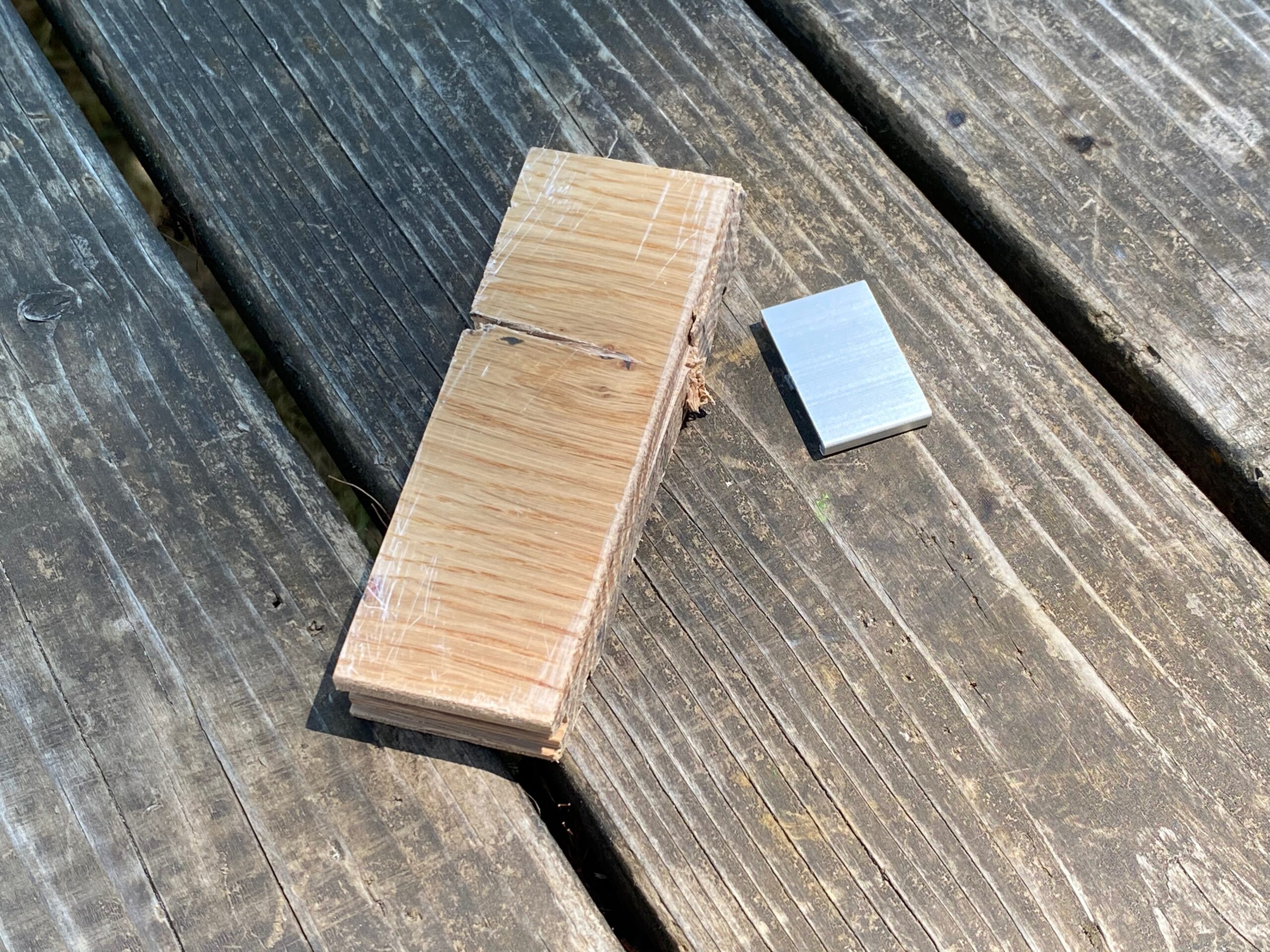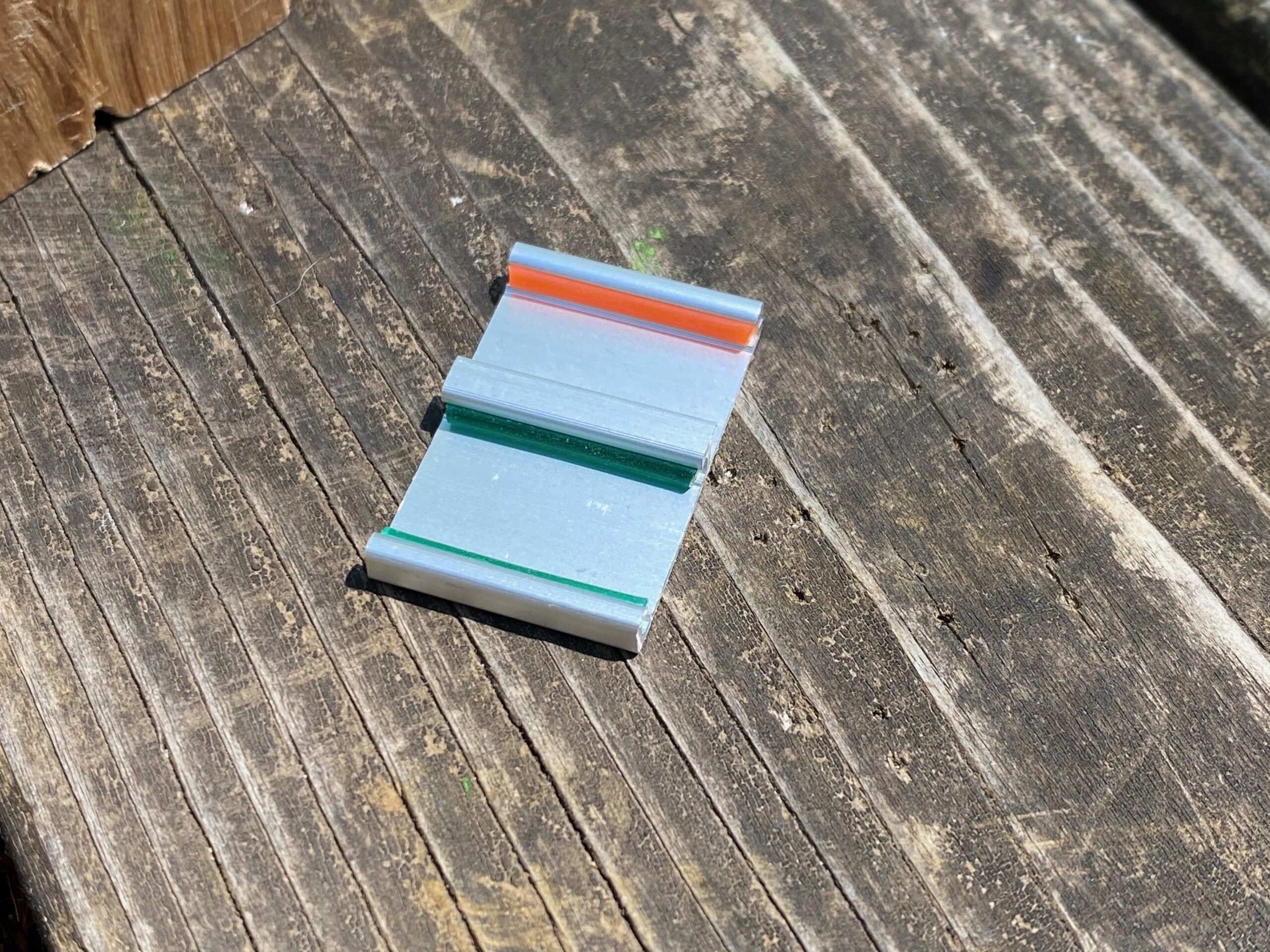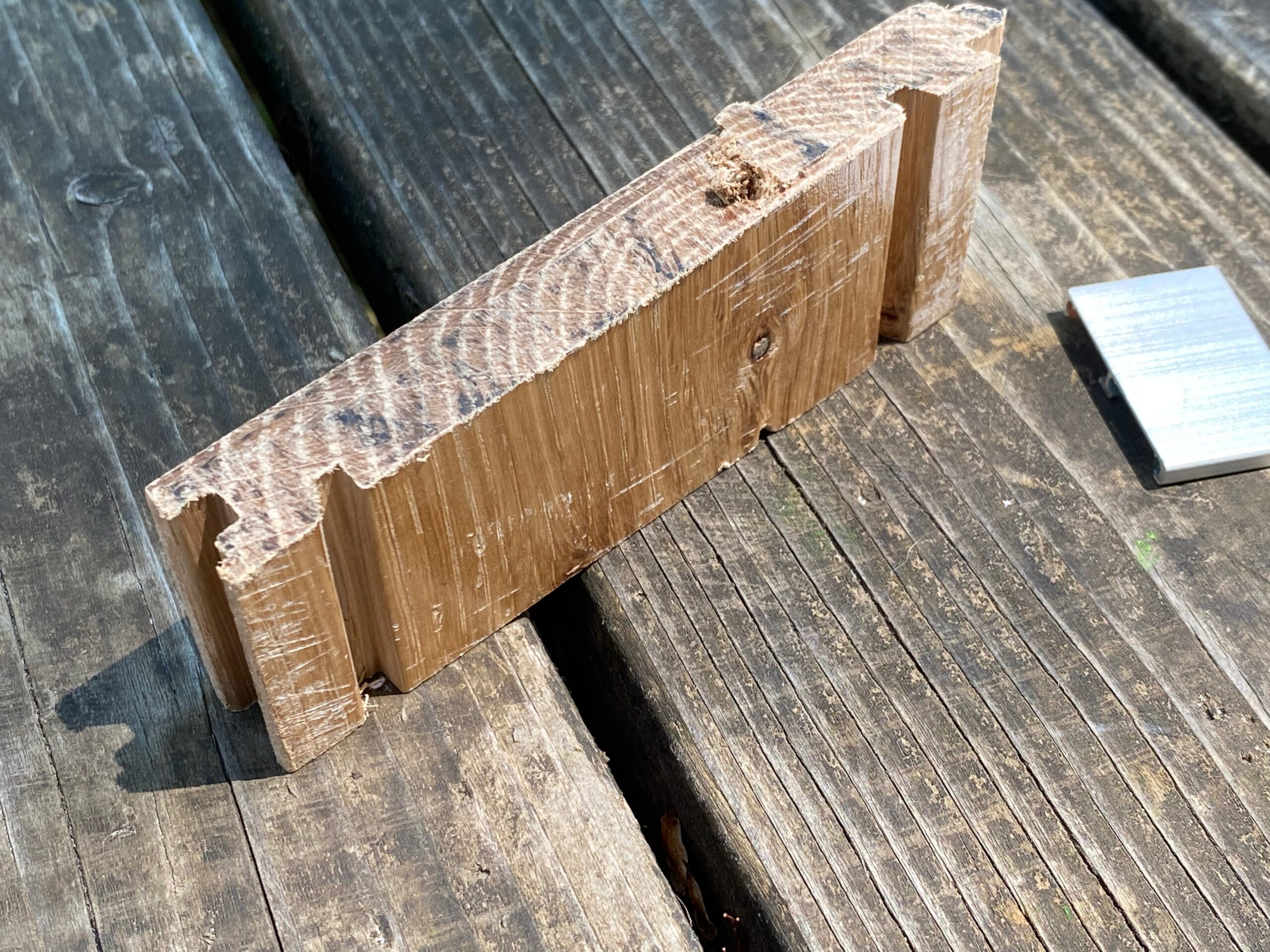Finished wood sample and metal clip: File this under “random building supplies my readers send me to test”
For those new to this website:
Tamara Rubin is a multiple-federal-award-winning independent advocate for childhood Lead poisoning prevention and consumer goods safety, and a documentary filmmaker. She is also a mother of Lead-poisoned children (two of her sons were acutely Lead-poisoned in 2005). Since 2009, Tamara has been using XRF technology (a scientific method used by the U.S. Consumer Product Safety Commission) to test consumer goods for toxicants (specifically heavy metals — including Lead, Cadmium, Mercury, Antimony, and Arsenic). Tamara’s work was featured in Consumer Reports Magazine in February 2023 (March 2023 print edition).
A reader sent me the two items pictured here for testing. As I understand it, these are from a flooring sample, with a finish and a clip used for assembling the flooring boards (although if I am wrong about this, I will update the piece).
My readers send me random things like this for testing all the time. The simplest way for me to report the test results for these items is to publish it here on LeadSafeMama.com, where perhaps another reader might find this useful! I will update this article with additional information shortly; in the meantime, here are the XRF test results for the items pictured:
Wood Sample: Finished surface
Test one
- Chlorine (Cl): 3,708 +/- 888 ppm
- no other metals were detected
Test two
- Chlorine (Cl): 3,097 +/- 882 ppm
- no other metals were detected
Wood sample: Unfinished (cut) side
- No metals were detected after multiple tests were completed
Clip sample:
Note: The tiny colored plastic rods within the clip cannot easily be removed to test separately, due to their size and location. However, given they are modern hard plastic, I would expect them to be Lead-free.
- Lead (Pb): 21 +/- 7 ppm*
- Platinum ((Pt): 259 +/- 35 ppm
- Zinc (Zn): 350 +/- 27 ppm
- Copper (Cu): 227 +/- 30 ppm
- Nickel (Ni): 252 +/- 49 ppm
- Iron (Fe): 2,213 +/- 157 ppm
- Indium (In): 10 +/- 5 ppm
- Vanadium (V): 162 +/- 78 ppm
Is that much Lead a problem?
The clip is primarily aluminum. This is a very low amount of Lead — considered safe by all standards. Aluminum materials are often contaminated with traces of Lead (and often at much higher levels than this). I would not be particularly concerned about this very low (trace) amount of Lead in an item like this (with the intended usage) — as it is not likely to either create Lead-containing dust OR be mouthed by a child.
As always, please let me know if you have any questions. Thank you for reading and for sharing these articles.
Tamara Rubin
#LeadSafeMama
Never Miss an Important Article Again!
Join our Email List












